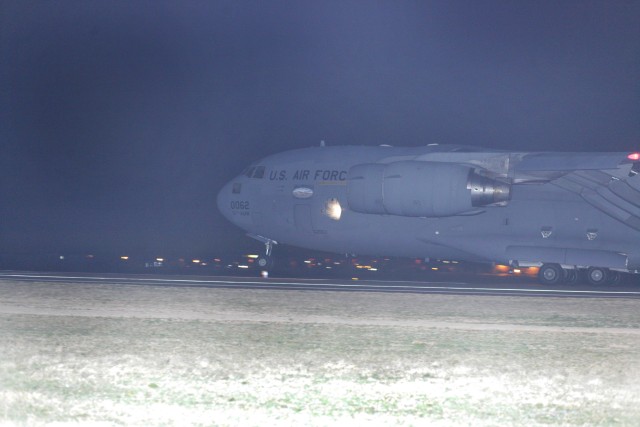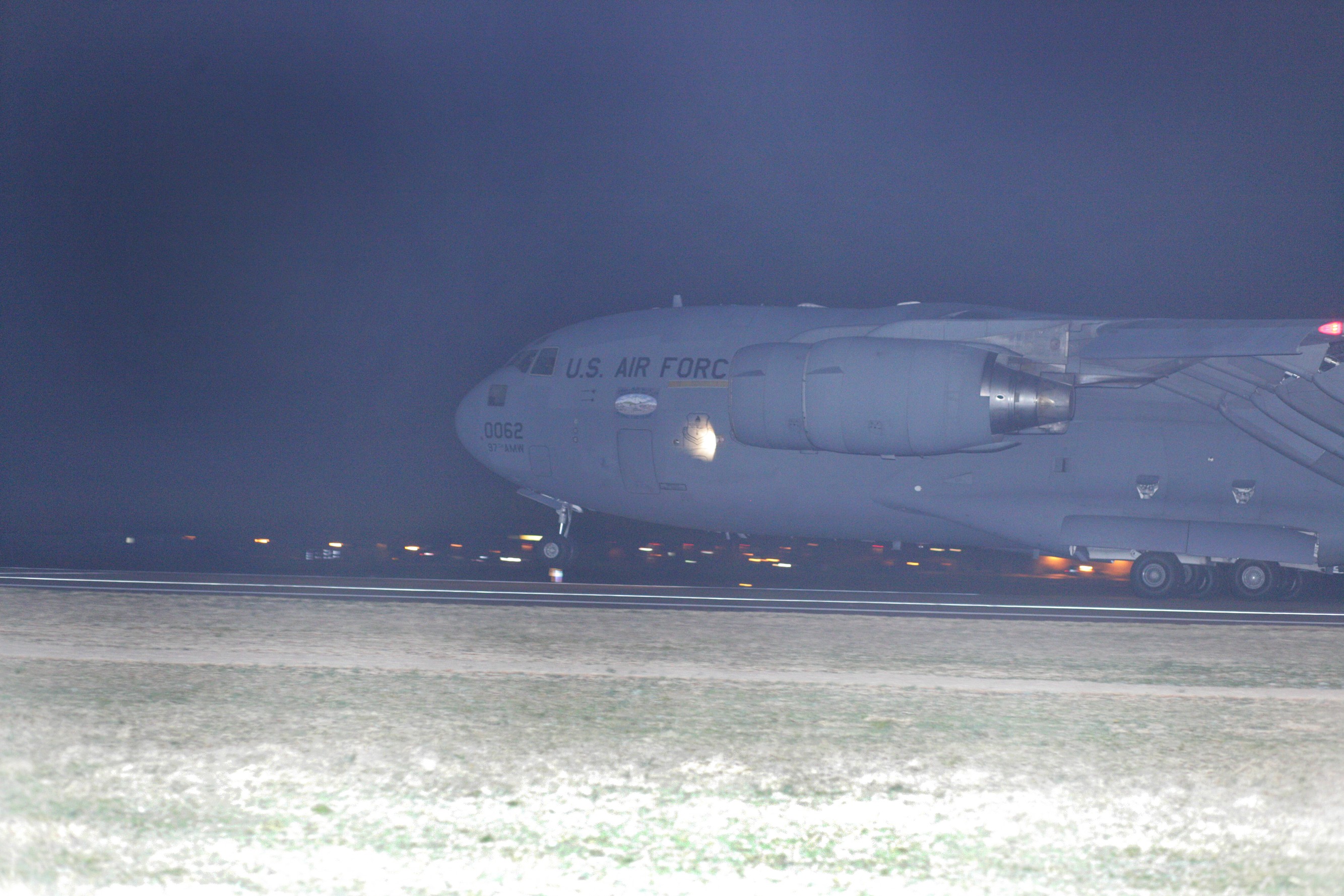FORT SILL, Okla. -- Fort Sill is transforming over the next 30 days into an airfield busy with frequent evening arrivals and departures as C-17 crews from Altus Air Force Base, Okla., are training here.
Altus pilots are perfecting their skills in assault landing zone procedures that require them to land in a 500-foot area on the runway then coast out to no more than 3,500 feet.
Maj. Michele Lobianco, 97th Operations Support Squadron assistant director of operations, said the runway at Altus is undergoing construction and will be unavailable for training for the next month.
"We are very appreciative of Fort Sill's leaders working with our leaders to allow us to come over and continue training; it's very realistic, because when we're out doing real-world support, whether Iraq, Afghanistan or other areas throughout the world, the Army is our user; we go out to support them. To fly in and out of an Army field is very realistic to what we're doing these days," she said.
Moving training to Fort Sill required some adjustments; the first of which arrived March 11 when a C-17 delivered an airport crash truck. Clint Langford, Fort Sill assistant fire chief, said the 3,000-gallon crash truck triples the water-carrying capacity of the post's largest firetruck. This truck, manned by three airmen from Altus, and an additional crash truck from the Fort Sill fire department will provide fire support services in the event of an in-flight emergency.
Langford added the Altus truck may also provide some training for his firefighters in advance of a similar sized crash truck the post should receive later this spring. He said firefighters will learn various aspects of the truck and how to operate it.
"It's sheer size and weight gives it way different handling characteristics. It's like a race car designed to get out on the runway as soon as possible and can reach speeds up to 70 mph on a straight away," he said.
Langford is also working to get some training time on the C-17s practicing egress procedures, shutting the aircraft down and removing the pilots.
As for the pilots flying into Fort Sill, Lobianco said they range from seasoned instructor pilots to those student pilots in training for instructor or commander pilot positions with at least 800 to 1,000 hours flight time. Pilots will bring the big cargo jets to a stop in 2,000 to 3,000 feet. On average, this is about one-quarter the braking distance required for a C-5 cargo plane.
"Anything we practice or train with on the C-17, such as going into an austere field or landing on short runways, is perfect training for responding to natural disasters," she added. "If a city had only half a runway available and couldn't get other cargo aircraft in, the tactics we are practicing at Fort Sill would allow C-17s to land and deliver pallets of water, relief aid or other high need items."
Although the C-5's 38 pallets of cargo dwarfs the 18 carried by a C-17, those 18 pallets still account for up to 180,000 pounds of cargo.
Langford said the added mission will require some juggling as the Army recently reduced Fort Sill's number of firefighters.
Previously, Fire Station 2, at the airfield, had a seven-man crew: four to work from the aerial truck for structure fires and three for the airfield crash truck. However, the station is now reduced to four firefighters who will respond on the crash truck if they are in station. Should they be out on another fire emergency, firefighters from another station will drive to Station 2, get into the crash truck and respond to the flight line emergency.
For that reason, and because of the extended drought Southwest Oklahoma is experiencing, Langford asked people to be especially mindful of all restrictions for any fires, to include extinguishing cigarettes, on and around post.
"Conditions are such that the fire potential is extremely high," he said. "Any fire this time of year has the potential of a large area very rapidly, and should a fire ignite in the cantonment area, with its many buildings, this could add structure fires to that conflagration."


Social Sharing